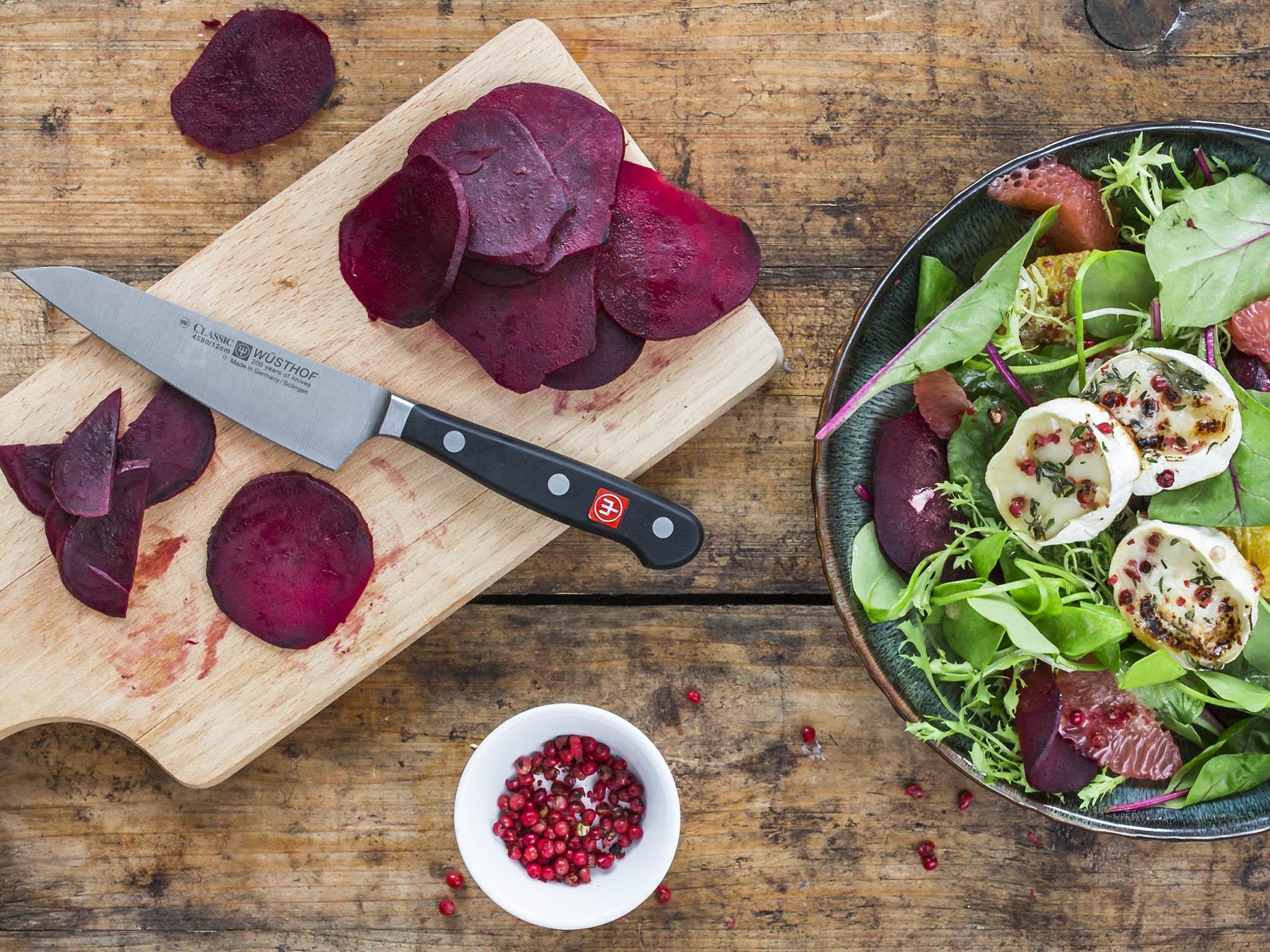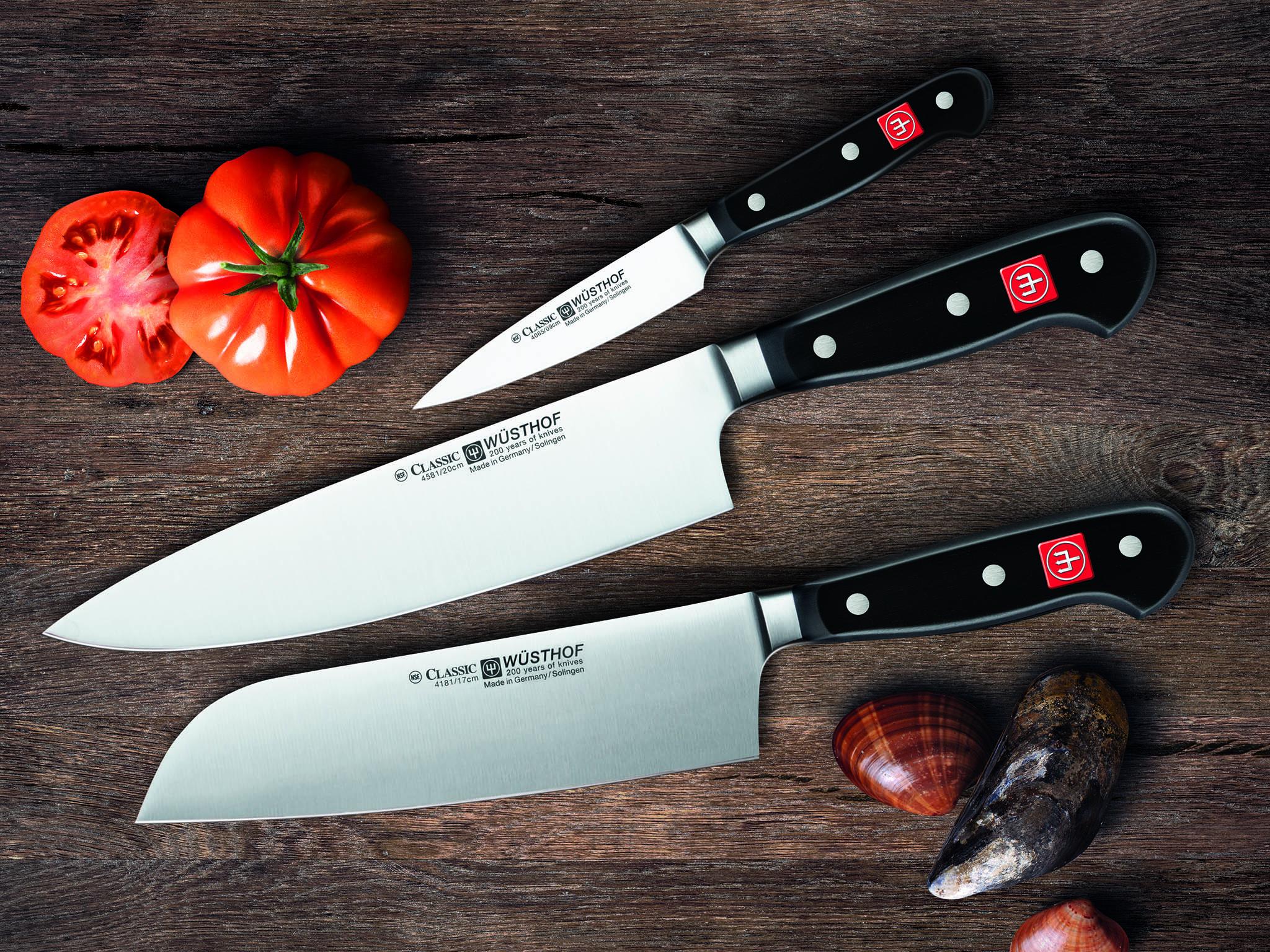How the 'city of blades' came to make the Wusthof kitchen knives
A serious set of knives is an essential part of a kitchen, says Julia Platt Leonard

Solingen, Germany is called the “City of Blades” and with good reason. For thousands of years, the city has been home to artisans making swords, scissors, razors and of course, knives. Today, almost all of the knives made in Germany come from this one area in North Rhine-Westphalia. And Wüsthof is one of the biggest names in knife making that calls Solingen home.
Wüsthof makes classic Western knives that are sturdy, well-balanced and hold their sharpness. When I received a set of Wüsthof knives the first day of cooking school, it was like an initiation ceremony. I was now the owner of serious knives so surely I must be a serious cook? Today, that Classic range is still Wüsthof’s bestseller in the UK which isn’t surprising. There is something fundamentally reliable and robust about them so that when you hold one in your hand you feel confident and capable in the kitchen.
Wüsthof has had a long time to perfect their knives – seven generations, in fact.
It started in 1814 when Johann Abraham Wüsthof set up a ‘Kotten’ or small grinding workshop to make shears as well as handling steel and other iron goods. Over two hundred years later, the firm is still family run. Today, Wüsthof operates out of factories that are incredibly high-tech– a far cry from the dark, cramped workshops that used grinding stones powered by a dammed pond.
It wasn’t cook’s knives but shears and pocket knives that formed the core of the early business. A 1904 Wüsthof catalogue featured more than 1,000 different pocket knives that ran to 50 pages. The company register from 1869 says the company made “…all kinds of forged shears, pocket knives, pen knives, daggers, table knives and forks, bread knives, vegetable knives and butchering knives, etc.”
The first products sold overseas weren’t cook’s knives at all but instead a collection of shears and pocket knives brought over to New York by Robert Wüsthof in 1881. Things changed dramatically for the company during and after the Second World War. During the war, they ceased knife production and instead manufactured steel toe caps for the army; and, in November 1944, Solingen was bombed, nearly destroying the entire city.

The good news for Wüsthof was that their factory escaped without much damage. They were able to start producing knives soon after the war ended and gained a valuable edge over competition. The bad news was that the competition got brand new factories to replace the old, antiquated ones, thanks to the Marshall Plan. Wüsthof was faced with out-dated equipment and buildings and production that still relied almost completely on handwork. Wüsthof faced the very real possibility of going out of business. To avert closure, they slashed the product range, removing table knives, shears or flatware. All efforts went behind knife production. Eventually they introduced robots and automated production lines.
If that makes you nostalgic for hand forged knives of old, it shouldn’t. The beauty of Wüsthof is that every knife is exactly the same. Buy a Wüsthof Classic seven-cm fluting knife and it’s absolutely identical to every other Wüsthof Classic seven-cm fluting knife sold anywhere in the world. They have optical measuring stations that can, in the blink of an eye, measure the blade to an accuracy of a thousandth of a millimetre. The cutting edge is laser-checked and each knife receives a final cutting edge test. If a knife fails, it never leaves the factory.
Wüsthof blades are made from a single piece of chromium-molybdenum-vanadium steel and are very sharp due to a laser-controlled sharpening process called PEtec. It takes 40 different processes to make a Wüsthof forged knife from start to finish. And while much of the process is automated, there are still 300 workers in two separate factories who ensure that every knife is absolutely perfect.
Of course, Wüsthof is much more than the black-handled, three-riveted knives that I first used. There are many different ranges, and within the Classic range alone, 70 different blade shapes to choose from. There are traditional cook’s knives in various lengths, bread and paring knives but also Japanese-style blades such as the Nakiri, Santoku and Yaragiba for slicing sushi and salmon. Basically there is every possible knife for every possible function whether you want a Chinese cleaver or a Chai Dao or a sausage knife.
Now they’ve introduced the Classic half bolster which allows you to sharpen the entire length of the blade – something the full bolster doesn’t allow. It’s a small change but one that will appeal to knife enthusiasts and a reminder that Wüsthof, now in its seventh generation, hasn’t lost its edge.
Join our commenting forum
Join thought-provoking conversations, follow other Independent readers and see their replies
Comments